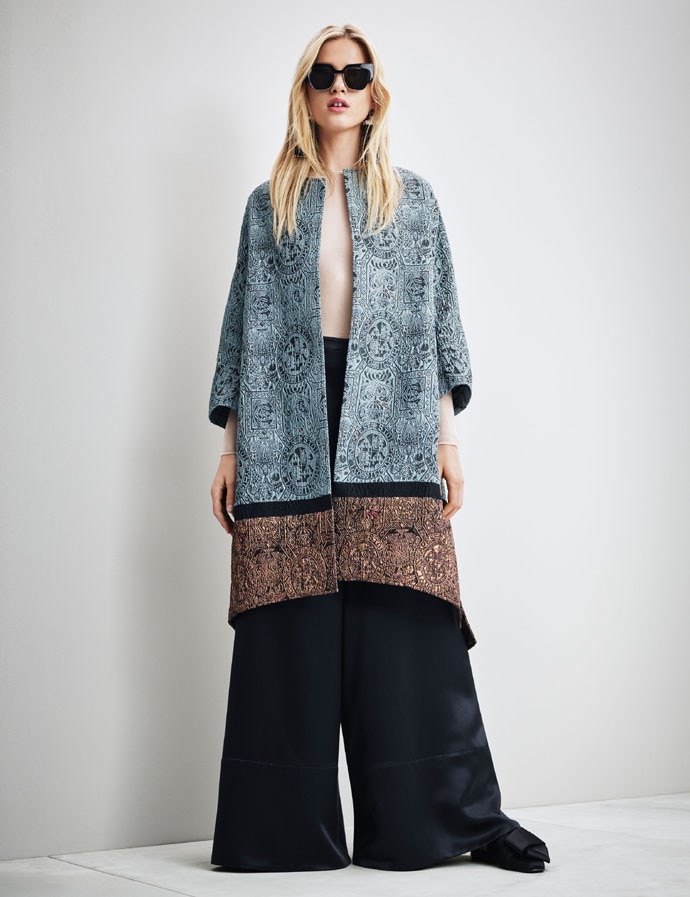Why sustainable fashion is the future

Dissatisfaction is annoying. You start out with hope, but the end result doesn’t quite satisfy the senses. The fashion industry is surprisingly falling into a comparable trap. Harking back to styles from decades past, recreating earlier collections and taking inspiration from previous shows has left a stale taste in the mouth, and déjà vu on the runway is an unsettling sentiment.
It is unexpected though, since fashion has always prided itself in being ahead of the curve. Shorter hemlines in the '20s came with the feminist liberation, Christian Dior banished the post-war gloom with his glamourous "new look" in '47, and Hussein Chalayan brought attention to the concerns of conflict and displacement in 2000 with his presentation "Afterwords".
 |
| The short hemline makes a comeback. |
One of the biggest issues today is climate change, given its universal impact on our day-to-day lives. Yet few have taken it as serious inspiration, and many of those who have have, had a strangely hypocritical dialogue with it. Assuming a sanctimonious tone in bringing attention to environmental issues, the said designers have betrayed their cause by sending models in non-biodegradable, synthetic fabrics like neoprene with images of factory smoke printed on them, or plastic embellishments created especially for the decoration.
While excitement is wearing thin, a handful of pathfinders have caught onto the need of the hour and created collections that are delightfully surprising.
The upcoming "H&M Conscious" range by the Swedish retail brand (to be launched in April) can be counted as one of them, as it attempts to shake up our understanding of luxe fabric. The 35-garment line uses recycled polyester from old PET bottles and fishnets, plastic from shampoo bottles and plastic bags, and Denimite — a derivative of worn-out jeans and textile that are shredded and mixed with organic resin, heated and pressed into solid Denimite boards.
Through a collaboration with French museum, The Louvre, the collection has incorporated elements from Art Deco, a jacquard jacket from a 300-year-old style, and dresses with prints from French painter Gustave Moreau’s paintings.
 |
| Inspired by Gustave Moreau. |
Sustainable fashion is the way forward without a doubt, and a stylish use of it is a credit to the designer’s aesthetic as well as technique. Of course, the concept of upcycling has been around for two decades now, with the intention of adding more value to old products. A good example of it is Aneeth Arora’s garments where she uses techniques like appliqué to refresh preworn jackets and jeans.
Her recent collections at the Amazon India Fashion Week saw upcycled denim jackets with poppy flower patchworks on damaged areas, and the jackets for the grand finale were patched, quilted and gold printed to make them look new.
 |
| By Aneeth Arora. |
"We added value to our recycled piece, somuch-so that people felt it was a new piece," she shared later and it came as a pleasant surprise.
Another young designer who works with upcycled fabrics is Kriti Tula with her label "Doodlage", as she pushes the idea of zero waste forward through easy and boxy silhouettes.
Meanwhile, Abraham & Thakore worked with the concept during their fall/winter 2015 collection, where they used discarded xray sheets from AIIMS hospital and created sequins out of them. The garments were stitched together using the age-old kantha technique from West Bengal and Odisha where old saris, shawls and dhotis are patched together to create new articles for everyday use.
 |
 |
| By Amit Aggarwal |
There is something fascinating in seeing everyday objects converted to wearable items, as they evoke a sense of wonder and playful ingenuity. Perhaps that is why Amit Aggarwal creates such a buzz around his shows each time with his label AM.IT, as he incorporates strips of polybags and waste rubber sheets into wearable works of art.
Every designer wants to stand out, but the intention cannot only be to reintroduce a trend from previous decades or the royal past. Fashion becomes special/poignant when it blends design, silhouette and cut with an overall fresh feel, and fabric/material is more often than not one of the most effective ways to create that new trend.
Considering the wastage, ecological impact and carbon footprint of the material used can open a new dimension to fashion designing, while remaining contemporary and relevant to the current environment. It’s time designers embraced the change so that they lead the way towards a more responsible future.
(Courtesy of Mail Today.)

